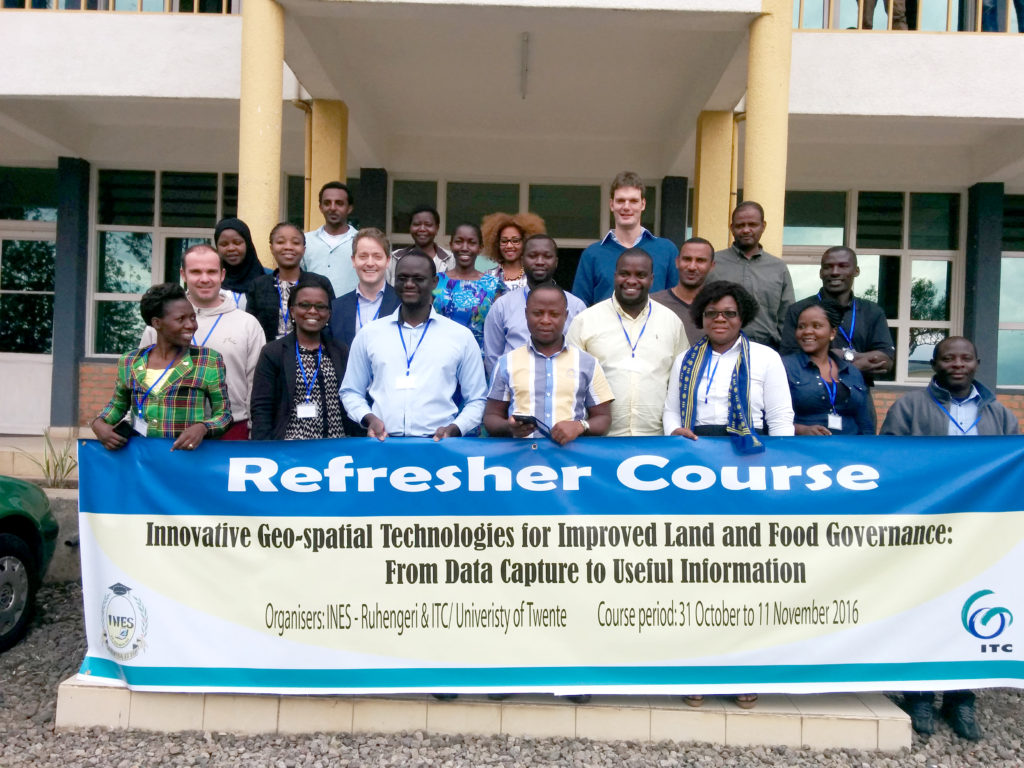picture courtesy Pix4D
Rwanda has already established itself in drone information. The nation deliberate one of many world’s first drone ports, and has established one of many first working fashions of drone supply of medical provides, with their associate Zipline. The nation has already established rules for drones, and is taking a management place within the area for using drone expertise.
Now, drone mapping firm Pix4D has partnered with educators in Rwanda to assist present coaching in drone photogrammetry.
The Netherlands sponsors continued schooling occasions like this one for former college students of Dutch institutes, and for 2016 the University of Twente organized a course in Rwanda on the most recent drone mapping strategies. “My impression is that there is a huge market in Africa at the moment,” stated Francesco Nex, assistant professor on the ITC Faculty, University of Twente. “They are growing very fast, with a shortage of surveying and maps available.” Nex taught photogrammetry for an utilized drone mapping coaching on the INES-Ruhengeri Institute in Rwanda, alongside with his colleagues Rohan Bennett, and Anton Vrieling.
“They were very, very, enthusiastic,” Nex stated of the 196 candidates, from which they chose 20 college students from eight neighboring international locations. “Most of them asked me very specific questions for specific problems. They really knew what they were looking for and had big expectations for this course and the use of drones.” The coaching consisted of three components: making orthophoto maps, 3D reconstructions, and topography fashions from UAV photographs in Pix4Dmapper software program; mapping purposes in land administration, and mapping purposes in meals safety.
The skill to map a crop utilizing multispectral photographs to higher perceive its high quality has potential to increase the follow of precision agriculture; Pix4D just lately participated in hearings on the UN Panel on Food Security to testify concerning the significance of precision agriculture as a software. Gerald Forkuor, lead distant sensing scientist for WASCAL and coaching attendee, defined that the predominance of subsistence farming within the area means small subject sizes, which require an affordable and environment friendly imaging system to seize them. “Persistent cloud cover prevents optical sensors from acquiring cloud-free images during the main cropping season,” stated Forkuor. “Knowledge of how UAVs can support in reducing such effects is very necessary.”
Leonard Sweta, coaching attendee and GIS analyst on the Centre for Mapping of Resources for Development (RCMRD) in Kenya, acknowledged that studying how to create 3D fashions and calculate vegetation indices in Pix4Dmapper had been essentially the most precious a part of the coaching. He goals to derive new strategies in land innovation and agriculture from them.
“The idea was to explain how to use UAV images to update maps, for cadastral,” stated Nex. “Most of the country has cadastral maps that are very out of date — from flights done sometimes over 20 years ago. There are also big informal settlements. This means there are large areas where you don’t know what’s going on.” Where there are mapping companies with plane within the area, usually sensors aren’t included and wish to be rented, creating an impractical and costly answer.
With a scarcity of present infrastructure in some areas and terrain that usually lends itself to realizing extra of the advantages that drones can present, Africa could also be a serious marketplace for drone expertise because the business strikes ahead. By taking the lead on progressive applications and regulation, Rwanda is serving because the hub of a burgeoning motion to make the most of drone tech throughout the continent.
